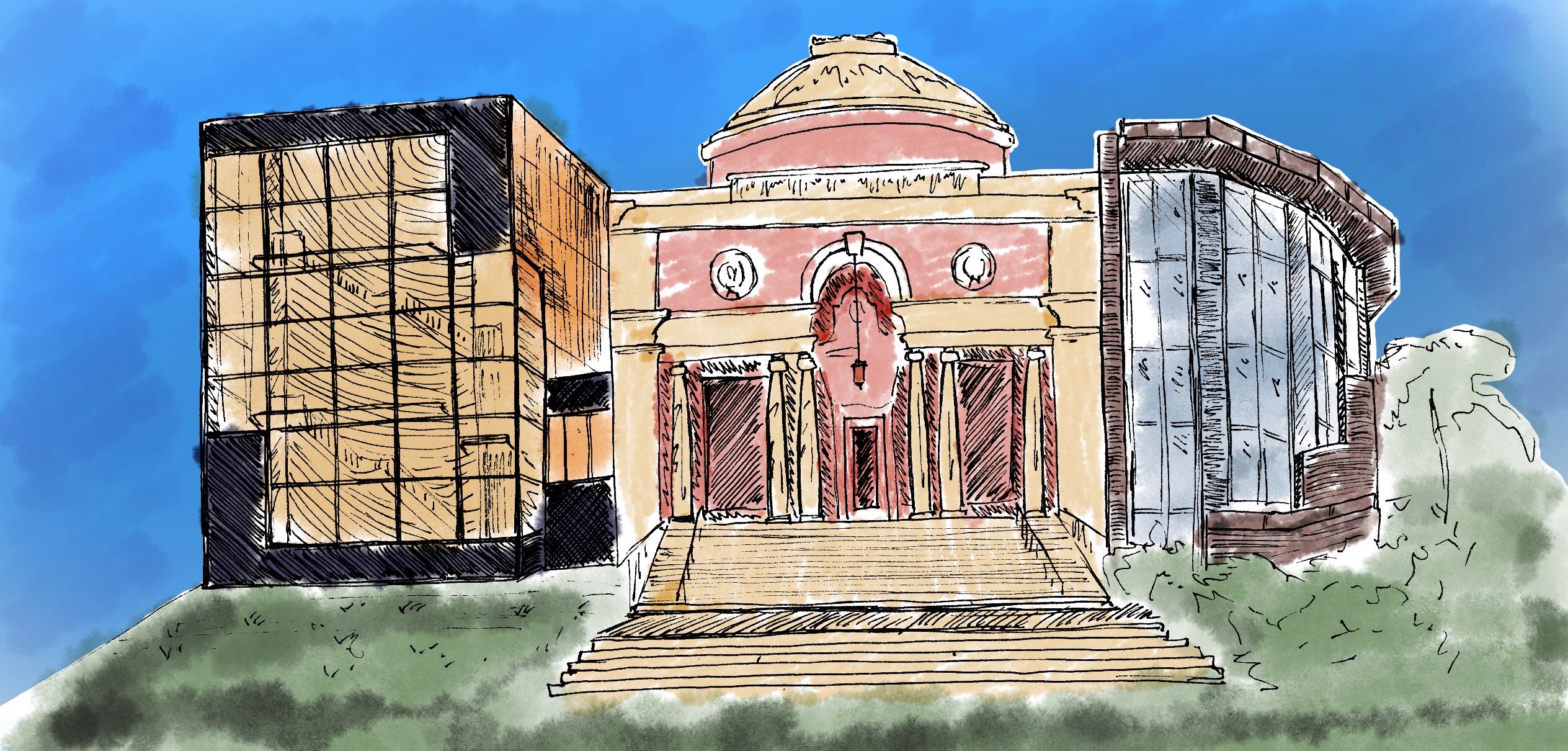A look into the art museums of the Maine Big Three
April 12, 2019
 Kayla Snyder
Kayla SnyderWith May 1 approaching quickly, College Confidential has blown up with mothers of high school seniors who are desperately searching for the ultimate answer to the Colby vs. Bates vs. Bowdoin (CBB) debate. These moms converse as if they’re trading secrets, whispering about the diameters of the campus pond (Bowdoin’s can be found between Moulton and Hyde when it rains) and the width of their tour guides’ smiles. While the Maine Big Three may be commonly known for their small class sizes and absurdly long winters, I’d like to illuminate another parameter: their art museums.
Bates, Bowdoin and Colby’s museums certainly differ, but the ways in which they explore the connection between their campus and the work on view are exciting to witness—regardless of whether you’re a prospective or current student, an art lover or an intense critic. So, if we are to care so much about the color of buildings (I proudly admit to finding Searles’ coral more satisfying than unsettling) and the strength of our football teams (all pretty bad), why not consider the museums of the CBB?
If I were to pick a college solely based on its art museum, I’m sorry to say that Bates definitely would have been cut from my Common App. While walking through the Bates College Museum of Art’s two small gallery spaces, I was more acutely aware the sound of my shoes made sliding on the waxed floors than of the art on the walls.
The only show currently in the museum is the Senior Thesis Exhibition, a collection of pieces by each of Bates’ senior Studio Art majors. While I praise Bates for providing these students the space and the opportunity to display their work, I wish the museum wouldn’t have sacrificed a selection of the intriguing objects in their permanent collection to do so. And honestly, something about student-only work being shown made the pieces feel less precious.
Maybe I would have received the museum differently had a different exhibit been on view. But with the meager size of the museum and a comparatively small budget comes an inherent limit on the quantity and quality of works, so I’m still not sure if Bates’ art museum has a chance compared to its fellow Maine NESCACs.
I remember the first time I googled “Bowdoin,” and information about the Bowdoin College Museum of Art (BCMA) popped up before the school itself. It is rare to find a Bowdoin student who has not visited our museum at some point—on one’s own volition or for the free snacks at a Student Night. Either way, the strength of the BCMA is well-known on campus.
More than both Bates and Colby, much of the BCMA’s work feels intentionally tied to Maine and the school itself. While actual student work is not on view, many of the current exhibitions have been curated by Bowdoin students. From the Bauhaus exhibit that honors architecture implemented on Bowdoin’s own campus to showcasing artists from Maine including Winslow Homer and our very own Mark Wethli, the BCMA is intentional with each piece showcased. Plus, there’s something about the bright teal walls and the oddity of the boxy glass entrance juxtaposed with marble columns that feels so essentially Bowdoin.
While I was aware of the fanfare about Colby’s art museum, I was not sure if it could compare to the high bar Bowdoin set. After visiting, however, I must admit that Colby Museum of Art is truly one of the most phenomenal museums, let alone college art museums, that I have visited.
While a visitor must wind through academic hallways to reach the museum entrance, the relatively unremarkable path accentuates the magic of the museum itself. Upon entering, I was greeted by bright lavender walls that bore an exhibit of 19th century prints. I was also struck by the unmediated introduction of student work; for example, a work by Arthur Wesley Dow, a famous printmaker and teacher of Georgia O’Keefe, was hung next to a woodblock carved by a sophomore Colby student.
This museum is perfectly conducive to wandering, as though it expected you to be overwhelmed by the works and sought to gently guide your way through cleverly interconnected spaces. When I reached the modern wing, however, I needed to pause a moment. The photos from my Contemporary Art textbook seemed to have leaped off the page. Name an important artist from the 20th century, and those white walls bore a piece: Warhol, Pollock, Rauschenberg, Rockwell, LeWitt, Dix, Grosz and the list continues. Next door, a gallery with 20-foot-high walls held hundreds of pieces just by Alex Katz. The works by these artists are objectively visually stimulating, providing a crash course in the wonderful eccentricity that exemplified the range of 20th-century artistic movements.
Although I must admit that having a prior interest in art influenced my ecstatic response to Colby’s museum in particular, college art museums are intentionally accessible to all students. Don’t care about paintings one bit? Visit Colby’s art museum and see what a McDonald’s would look like if it flooded. Interested in art but can barely maintain legible handwriting, let alone render something? See Bates’ studio art majors play with mirrors and plaster. Want to learn about art but don’t know where to start? Just come to Bowdoin. We’ve got this covered.

Comments
Before submitting a comment, please review our comment policy. Some key points from the policy: